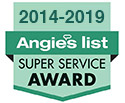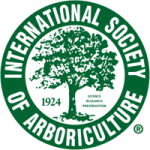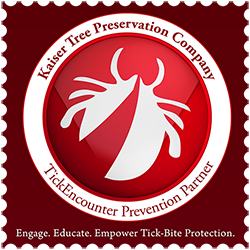Anthracnose
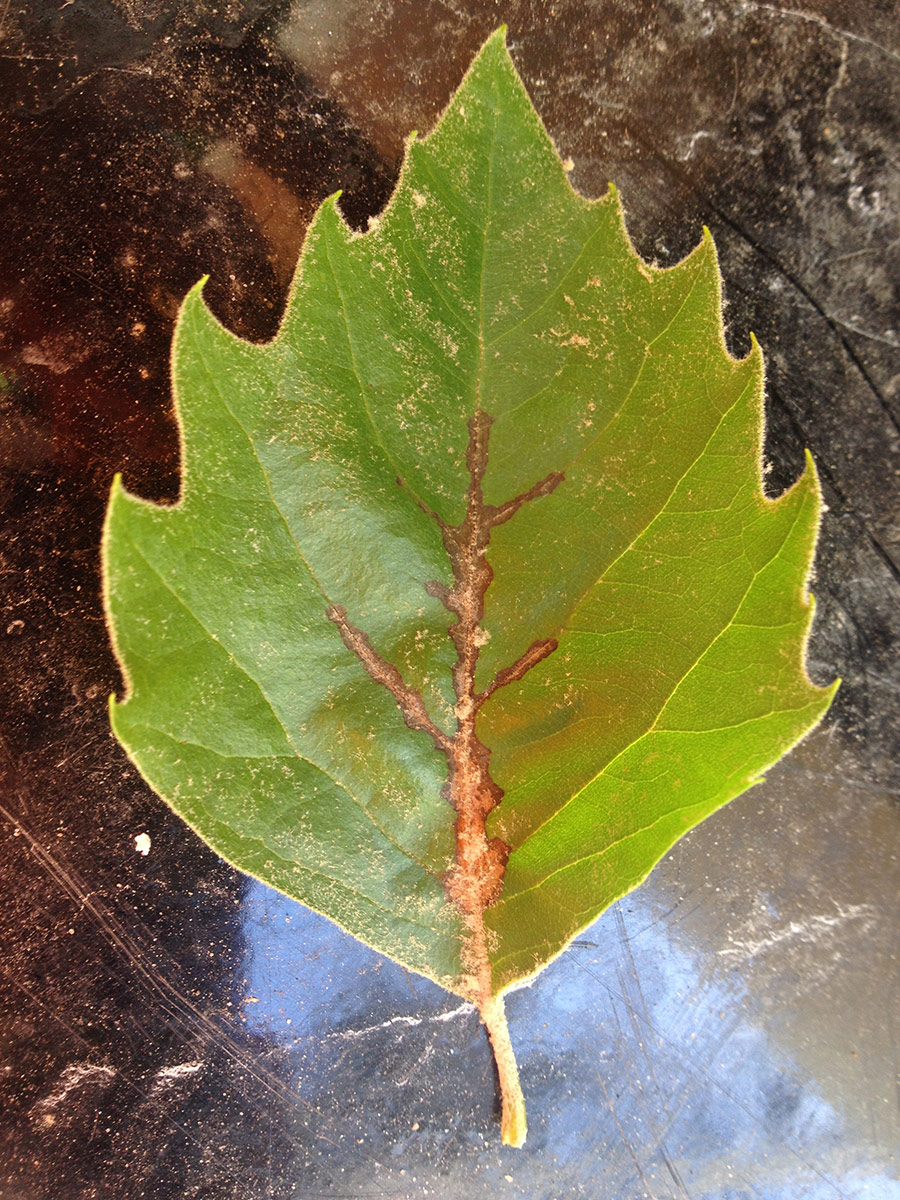 Most commonly found in deciduous trees such as Sycamore, Dogwood, Linden, Maple, and Oak. Excessively damp conditions in the spring will often result in anthracnose infections in these species. Symptoms are: excessive leaf drop in late spring; visible fungi on leaf; continued infections often result in oddly formed branching. Foliar treatments with fungicide are successful, particularly as a preventative measure, applied at the beginning of the growing season.
Most commonly found in deciduous trees such as Sycamore, Dogwood, Linden, Maple, and Oak. Excessively damp conditions in the spring will often result in anthracnose infections in these species. Symptoms are: excessive leaf drop in late spring; visible fungi on leaf; continued infections often result in oddly formed branching. Foliar treatments with fungicide are successful, particularly as a preventative measure, applied at the beginning of the growing season.
Apple Scab
 This fungal disease is very disfiguring to the fruit and foliage of apple and crabapple trees. It can cause reduced vigor of the tree through reduced photosynthetic ability, as well as make the fruit unpalatable. Preventative foliar treatments are successful, if the conditions warrant. Edible apple trees require quite a commitment to keep them healthy and pest free (minimum 4 sprays per season), as well as regular pruning if attractive fruit is desired.
This fungal disease is very disfiguring to the fruit and foliage of apple and crabapple trees. It can cause reduced vigor of the tree through reduced photosynthetic ability, as well as make the fruit unpalatable. Preventative foliar treatments are successful, if the conditions warrant. Edible apple trees require quite a commitment to keep them healthy and pest free (minimum 4 sprays per season), as well as regular pruning if attractive fruit is desired.
Black Knot Canker

Most commonly found in black and edible cherry species. This disease is easily identified by the presence of elongated knots in the woody tissues of the trees twigs and branches. If left unchecked, the amount of knots in the tree will increase, causing the ends of the affected branches to die off.
This will eventually kill the tree. Control of this disease is two part:
- Pruning out and raking out affected branches and
- Foliar fungicide applications can offer significant protection, when caught early. Applications should start at the beginning of the growing season, and continue through the beginning of summer.
Cedar-Apple Rust
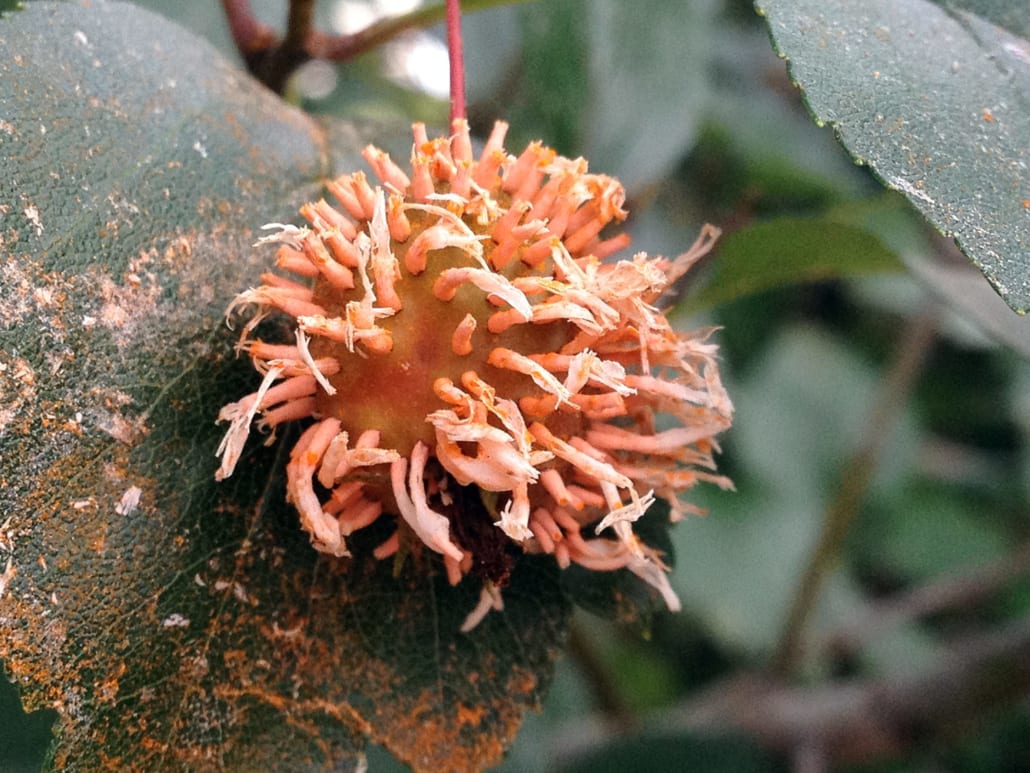 This alternate host disease can distort the foliage, fruit, and twigs of apples and crabapples, but is mostly a cosmetic injury. For ornamental crabapples in areas of high visibility, it might warrant treatment, as it leads to premature leaf yellowing and leaf drop. The most conspicuous form of this disease is the galls that form on juniper and cedar.
This alternate host disease can distort the foliage, fruit, and twigs of apples and crabapples, but is mostly a cosmetic injury. For ornamental crabapples in areas of high visibility, it might warrant treatment, as it leads to premature leaf yellowing and leaf drop. The most conspicuous form of this disease is the galls that form on juniper and cedar.
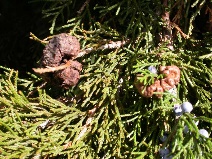 Spores are released from here to infect the crabapple in the early spring. These galls do not need treatment, but preventative foliar treatments are available for susceptible crabapples. Foliar sprays with the appropriate fungicide are successful, starting in the beginning of the growing season.
Spores are released from here to infect the crabapple in the early spring. These galls do not need treatment, but preventative foliar treatments are available for susceptible crabapples. Foliar sprays with the appropriate fungicide are successful, starting in the beginning of the growing season.
Diplodia Tip Blight
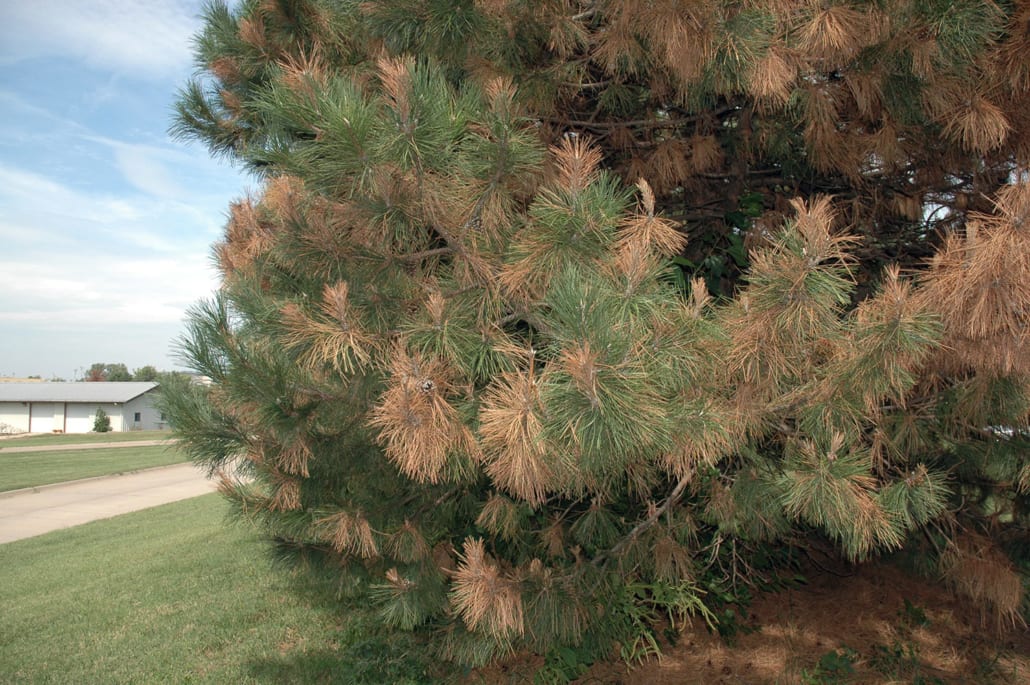 Most commonly found in Austrian, Scotch, and red pine, this needle disease stunts the new year’s growth, and eventually causes older needles on the tree to turn brown.; Severely affected trees will die from this disease, if untreated. Treatments with foliar fungicide sprays are successful, starting in the beginning of the growing season.
Most commonly found in Austrian, Scotch, and red pine, this needle disease stunts the new year’s growth, and eventually causes older needles on the tree to turn brown.; Severely affected trees will die from this disease, if untreated. Treatments with foliar fungicide sprays are successful, starting in the beginning of the growing season.
Dutch Elm Disease (DED)
 Introduced in the early 1900’s, this disease has wiped out most of the mature American elms in the country. DED is spread by a harmless beetle, and also can be spread from tree to tree by root contact. Treatment is successful when done as a preventative measure. The preferred method of treatment is direct tree trunk injection.
Introduced in the early 1900’s, this disease has wiped out most of the mature American elms in the country. DED is spread by a harmless beetle, and also can be spread from tree to tree by root contact. Treatment is successful when done as a preventative measure. The preferred method of treatment is direct tree trunk injection.
Phytopthera Root Rot
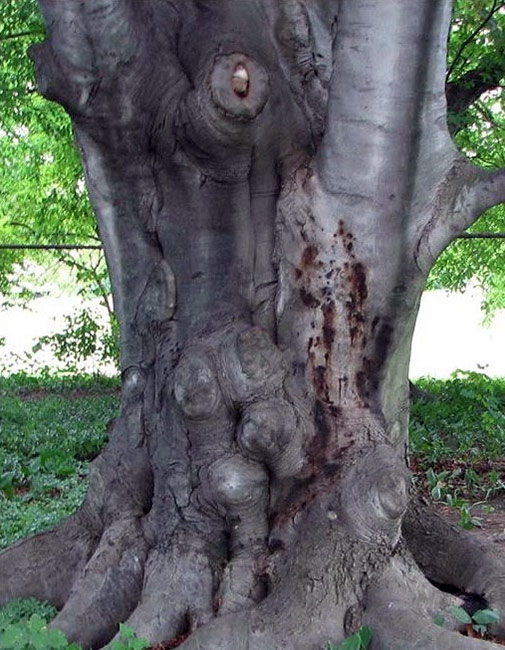
Primarily a concern with older beech trees, this root disease is the leading source for mature beech mortality. Bleeding cankers are seen on infected trees (see photo). Treatments are helpful, especially as a preventative measure, or on mildly affected trees.
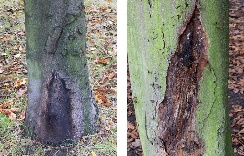
Powdery Mildew
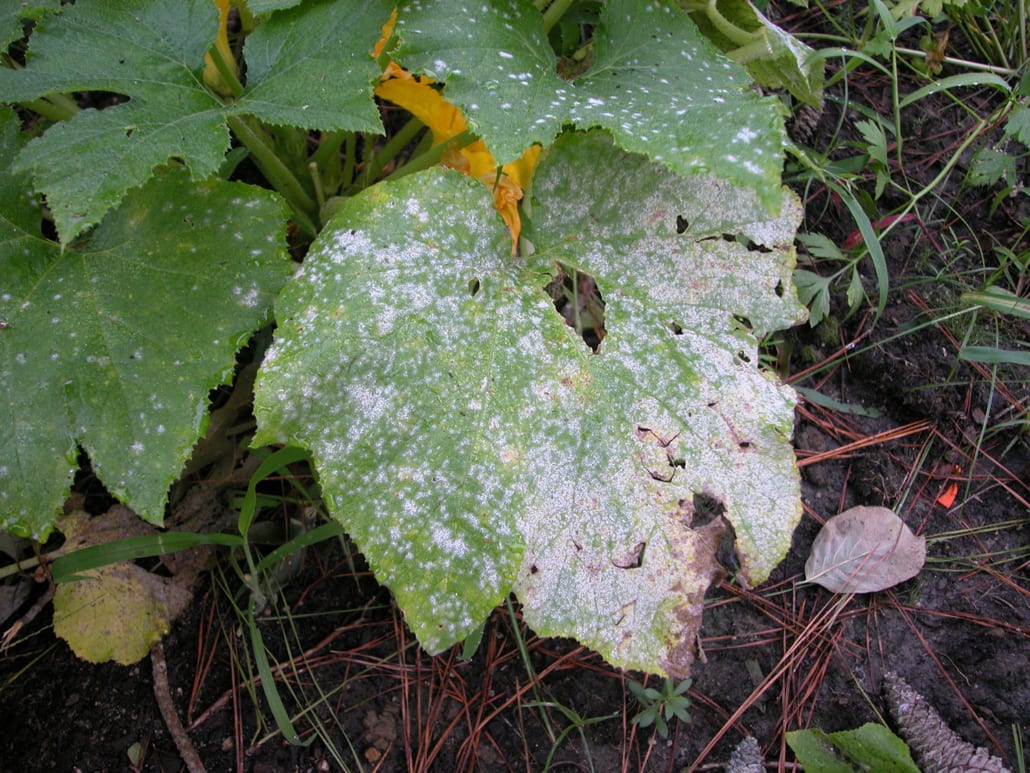 This unsightly leaf fungus commonly affects lilac and dogwood. It is aesthetically unpleasing, but not very harmful to a healthy plant. Highly visible ornamentals may warrant treatment, via foliar spray. Treatments are successful, when applied as a preventative, starting in the beginning of the growing season.
This unsightly leaf fungus commonly affects lilac and dogwood. It is aesthetically unpleasing, but not very harmful to a healthy plant. Highly visible ornamentals may warrant treatment, via foliar spray. Treatments are successful, when applied as a preventative, starting in the beginning of the growing season.
Rhizosphera Needle Cast
 Most commonly found in blue and white spruce, this needle fungus causes new and old growth to turn a purplish brown and fall off. If left unchecked for too long, the tree will lose so many needles that its aesthetic value is eventually destroyed. Foliar treatments with fungicide are successful, starting in the beginning of the growing season.
Most commonly found in blue and white spruce, this needle fungus causes new and old growth to turn a purplish brown and fall off. If left unchecked for too long, the tree will lose so many needles that its aesthetic value is eventually destroyed. Foliar treatments with fungicide are successful, starting in the beginning of the growing season.
Leaf Spot in Birch
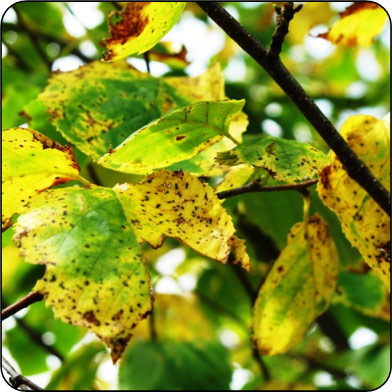
Anthracnose, which is sometimes referred to as leaf spot or leaf blight, causes brown or black spots, sometimes with a light center, and often surrounded by yellow tissue. Infected leaves usually drop prematurely from the tree.

